Outdoor Mold Prevention and Removal
This post may contain affiliate links. Read our full disclosure.
Outdoor mold is literally everywhere. Mold plays a huge role in our ecosystem and has since the beginning of time. It isn’t going anywhere.
No one wants a moldy patio, mold on their patio furniture, or mold on their deck. Not only does it look bad but you are tracking those mold spores into your home. Not good. Afterall, you want to prevent mold in your home not invite it in!
What Causes Outdoor Mold?
Mold thrives all year round thanks to its ability to find suitable conditions to grow just about anywhere outside.
Mold needs moisture and food to survive. Even in the desert, there is moisture to be found from rain, humidity, and plant life. And food is literally everywhere outside. While mold prefer organic materials like leaves, wood, grass, flowers, and dead animals, it can happily grow on concrete, the side of a metal shed, and other inorganic material thanks to the dust and debris that cling to those surfaces.
So really, the outdoors is an ideal place for mold from a moisture and food standpoint.
Mold prefers darker conditions as well as warmer temperatures but many types of mold can survive just fine in freezing conditions and direct sunlight.
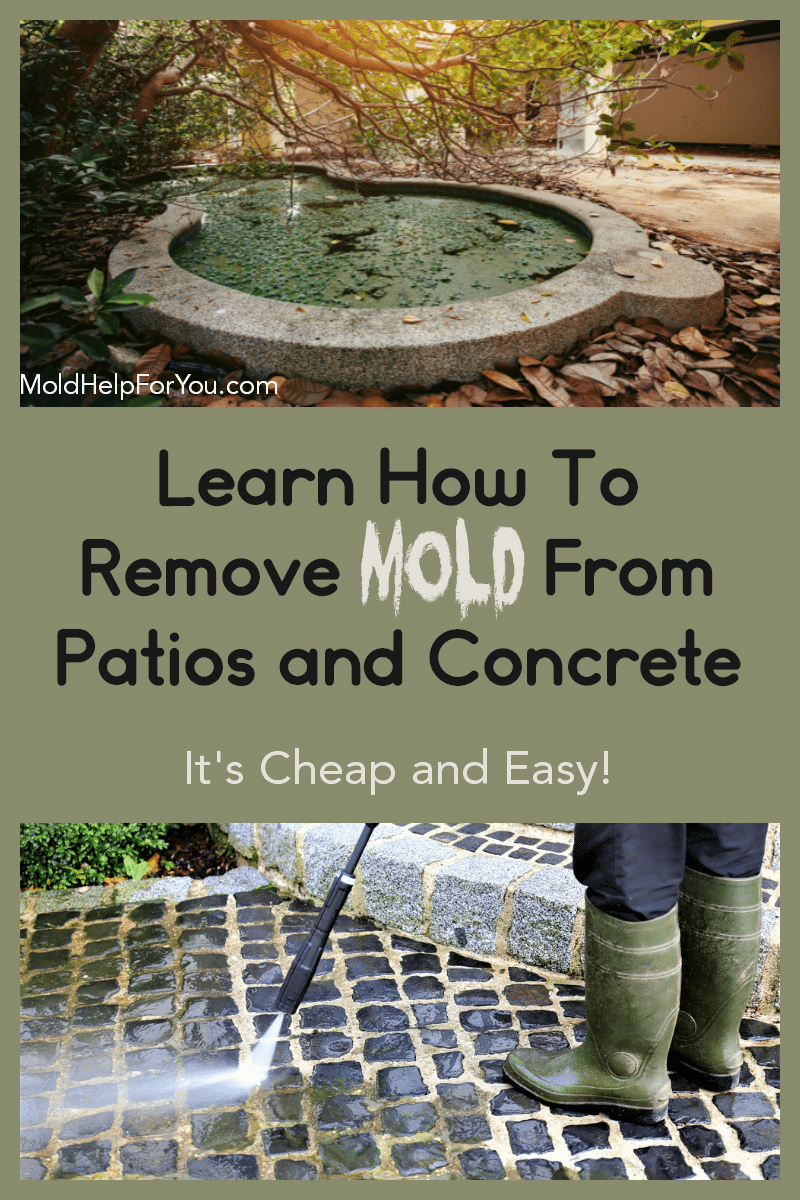
Some Little Known Facts About Outdoor Mold
- Molds may persist after the first killing frost.
- Some molds can grow at subfreezing temperatures.
- Snow cover lowers the outdoor mold count dramatically but does not kill molds.
- After the spring thaw, molds thrive on the vegetation that has been killed by the winter cold.
What Are The Types Of Outdoor Mold?
I wrote an entire post on the types of outdoor mold. Head over there to learn which species of mold you are interacting with in your backyard!
Is Outdoor Mold Dangerous?
It can be! There are several reasons why.
- Outside mold doesn’t always stay outside. You track it in on your shoes or items that go back and forth from outside to inside. Mold on a roof for example can easily find it’s way in to your attic.
- Exterior mold can lead to health problems. If you spend time outdoors in areas with significant amounts of mold or if you are particular sensitive to move, your health will be at risk.
- Mold can damage your home, whether it grows inside or outside. Almost all materials will be damaged by mold to some extent given enough time.
- The presence of mold can bring down the value of your property even if it is outdoor mold.
- Outdoor mold just looks bad.
What Does Mold Grow On Outdoors?
Mold can grow on pretty much anything outdoors. Since the conditions are perfect for mold growth and there is an abundance of food, mold spores don’t have to go far to find a nice home. Having said that, you are most likely to see mold growing on:
- Decks
- Fences
- Siding
- Patios
- Patio furniture
- Outdoor carpet
- Wood piles
- Piles of leaves and debris
- Inside bags of opened potting soil
- Mulch piles
- Compost piles
How Do You Prevent Outdoor Mold?
Here are 14 tips on how to prevent outdoor mold from growing in the first place.
#1. Do not allow moisture to pool. Make sure you have proper drainage and that water flows away from your house and yard and not into it. This applies to decks as well. Make sure water has a way to drain off.
#2. Avoid flood irrigation if possible.
#3. Mow and rake your lawn regularly. Mold loves a pile of freshly mowed grass.
#4. Promptly repair and seal leaky pipes, hose connections, sprinklers, drip irrigation, or other sources of water.
#5. Trim plants away from siding and the roof so sunlight can find its way to these surfaces and kill mold.
#6. Water plants and lawn in the morning so the water has time to dry during daylight hours.
#7. Clear leaves and debris from around your home and yard. Wet leaves and other debris can cause mold to grow. Not only are they a source of food for biological growth, they also provide shade from the sun which hinders mold.
#8. Keep gutters clear to drain away from the house.
#9. Store firewood away from the house and in a weatherproof shed.
#10. Sweep your deck regularly to remove loose mold spores, food, pollen and dirt to help keep your deck free of mold.
#11. Use mold resistant building materials like treated lumber, stainless steel, galvanized fasteners, and stucco siding outdoors.
#12. Paint the exterior of your home, sheds, and other buildings with mold resistant paint.
#13. Sometimes, the duct from your clothes dryer will produce steam on the outside of your home siding that mold is drawn to. Check the venting around these areas frequently to make sure they are clean and free of moisture buildup.
#14. For outdoor areas or outdoor furniture that is prone to mold growth, apply Superstratum Mold and Mildew Protectant. Apply it to fences, decks, patios, stucco, vinyl siding, roofing, and other outdoor areas every 1-2 years. Apply it to patio furniture, other outdoor furniture, and outdoor carpet every 6 months. Superstratum invisibly binds biocides on molecular level to surfaces. This helps it resist being diluted or rinsed away by water or high humidity. It is completely non-toxic and has none of the harmful fumes or corrosive risks. So it is safe for you, your family, your pets, the environment, and all outdoor FOR BEST RESULTS, Superstratum must be applied to clean or new surfaces because this is a mold preventer, not a mold remover. Shake bottle. Use misting sprayer to lightly coat target surface. Let air dry. Do not wipe on or wipe dry. Can be applied to damp surfaces. Covers approx 1000 sq ft per gallon.
How To Remove Outdoor Mold
First and foremost, to fully eliminate mold, you must address any moisture problems, and then remove the mold. Let’s take a look at some common areas that get mold growth outdoors.
How To Remove Mold On Outdoor Furniture / Patio Cushions
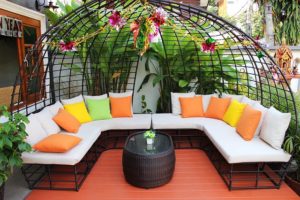
- Wipe off or shake off any loose dust and debris.
- Apply a thin, even application of Concrobium Mold Control OR Superstratum Mold and Mildew Remover to the moldy surface.
- Scrub any areas with mold growth.
- Wipe with a wet cloth or rinse without saturating the furniture or cushion.
- Reapply the spray.
- Allow to dry completely as either solution eliminates the existing mold spores as it dries.
You can purchase Concrobium Mold Control on Amazon or on Home Depot’s website. You can purchase Superstratum here.
How To Remove Mold On Outdoor Carpet
My suggestion is to not even have outdoor carpet. But if you must…
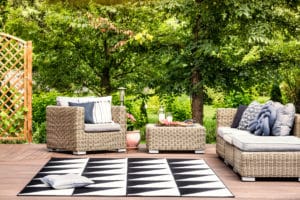
- Vacuum the carpet with an outdoor shop vac. Do NOT vacuum it with a vacuum you use indoors. If vacuuming is not an option, rake or sweep the outdoor carpet to loosen debris.
- If the carpet can be moved, take it to the driveway or other concrete surface with sunlight and good drainage.
- Spray EC3 Mold Solution Spray onto the entire carpet. You want the carpet really damp. For ease of use, you can take the EC3 Mold Solution Concentrate and pour it into a sprayer that hooks up to your garden hose and lightly mist the entire outdoor carpet.
- Using the CLEANOVATION Rug Renovator Carpet Cleaning Brush, work the solution into the outdoor carpet.
- Apply another round of EC3 Mold Solution to the outdoor carpet.
- Allow the rug to dry fully (in the sun if possible).
Before putting the rug back, make sure you clean the area that will be under it. You don’t want to place it on top of mold or other debris.
How To Remove Mold On A Concrete Patio or Other Non-Wood Patio Surface
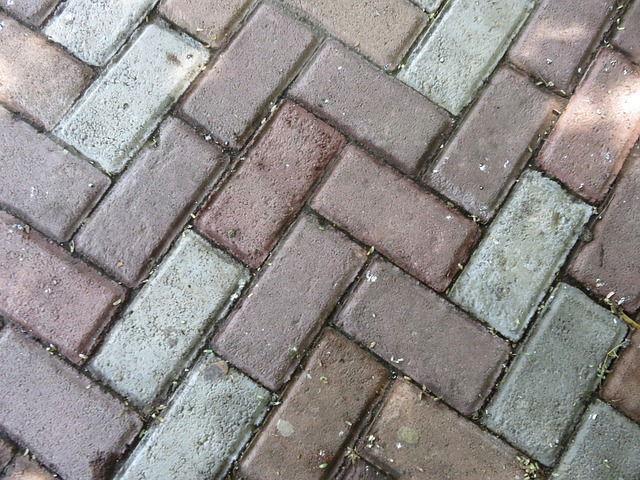
- Power wash your patio with a 50/50 vinegar and water solution using a wide, low-pressure nozzle or fan tip. Please keep in mind that power washing can loosen or even remove the substrate used between patio pavers or bricks so test a small spot first.
- Scrub moldy areas with a stiff brush and rinse with a hose.
- Allow to dry thoroughly.
- Spray on Concrobium Duo Blast Spray and let it soak in without drying. This will help lift any embedded mold that was not removed with power washing and scrubbing. Since it can take up to 24 hours to fully work, keep the surface dry during that time.
How To Remove Mold From Wooden Decks and Fences
Concrobium House and Deck Wash is truly the best way to remove mold from decks and fences. I have personally seen some amazing results with this product.

- For decks: remove items from surface and sweep to remove loose debris. You do not need to cover surrounding plants or grass as Concrobium House and Deck Wash is completely non-toxic and chemical free.
- Shake or invert jug several times before spraying.
- Attach garden hose to nozzle ensuring valve is in OFF position.
- Adjust valve to MIX setting and spray on target area.
- For fences, work from the ground up and allow to sit for 3-5 minutes.
- For decks, spray on target area, let sit for 3-4 minutes and scrub with a stiff bristled brush.
- Do not allow to dry.
- Turn valve on jug to H20 setting and thoroughly rinse surface.On horizontal surfaces, remove items from surface and sweep to remove loose debris. Product does not require surrounding plants or grass to be covered.
Repeat if necessary although I personally have never had to do so.
How To Remove Mold On The Lawn
- Let your grass dry and rake up any dead grass and/or thatch.
- Put these materials in a garbage bag.
- Put a fungicide that’s safe for lawn use (like this one from Dr. Earth) in a garden sprayer and apply it to moldy areas.
- Cut your grass to expose as much of its growth to light as possible.
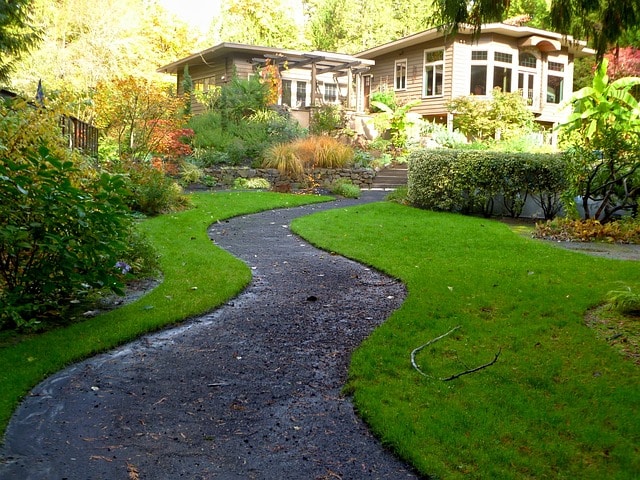
And there you have it! Your complete guide on how to prevent and remove outdoor mold. I hope this helps keep the exterior of your home and your yard free from mold growth for years to come.
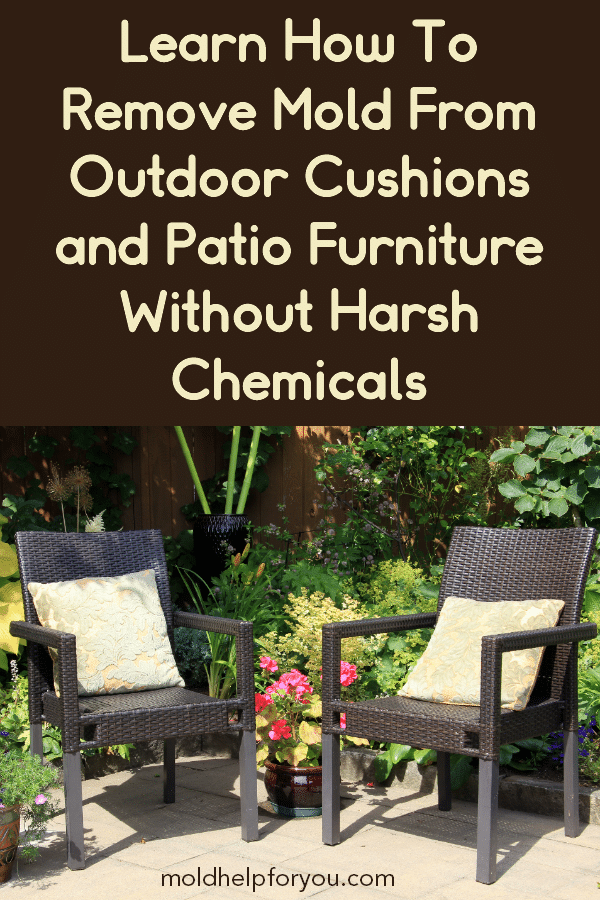

Hi Jennifer
I am sorry about the mold exposure for you and your daughter! Unfortunately, I was exposed for seventeen years to a moldy home and no one knew why I was sick. It was our dream house and the builder neglected to put in flashing. I was forty six then and now seventy seven and still not well because even though we remediated the house and then eventually built a mold free house, I have an auto immune reaction to outdoor mold. I tried Low Dose Allergen therapy and will probably try again. No shots or drops work because it is not a type one IgE allergy or respiratory. I just feel flu like and it has taken a huge toll on what would have been a normal life. Here in Delaware, mold is high. I am doing what I can inside and outside the house, but I golf, run races and garden. I love our pool, being outdoors and with mold plates find a lot of mold comes inside and makes me sick. Windy days really make me sick. Fall is just terrible, but winter and early summer are the best. My question to you is are you still sensitive to outdoor mold and has any de sensitization helped. I saw Ritchie Shoemaker years ago and I have the HLA gene and all other bad stuff MTHFR etc. My husband never got sick. We both test positive in the RealTime mold tests, but he feels fine. I use Micro Balance products. Thanks you for reading this.
Hi April! I actually do pretty well outside. We get dust storms here and when that happens symptoms flare a little but day-to-day I am ok. My daughter on the other hand is still a huge mess with her sinuses. We continue to work on that. When we lived in mold I didn’t have respiratory symptoms but my daughter did. So I’m sure that has something to do with it. Basically I keep up with the sinus rinses daily. For my daughter I also do the Citridrops nasal spray daily.
Thank you for sharing.